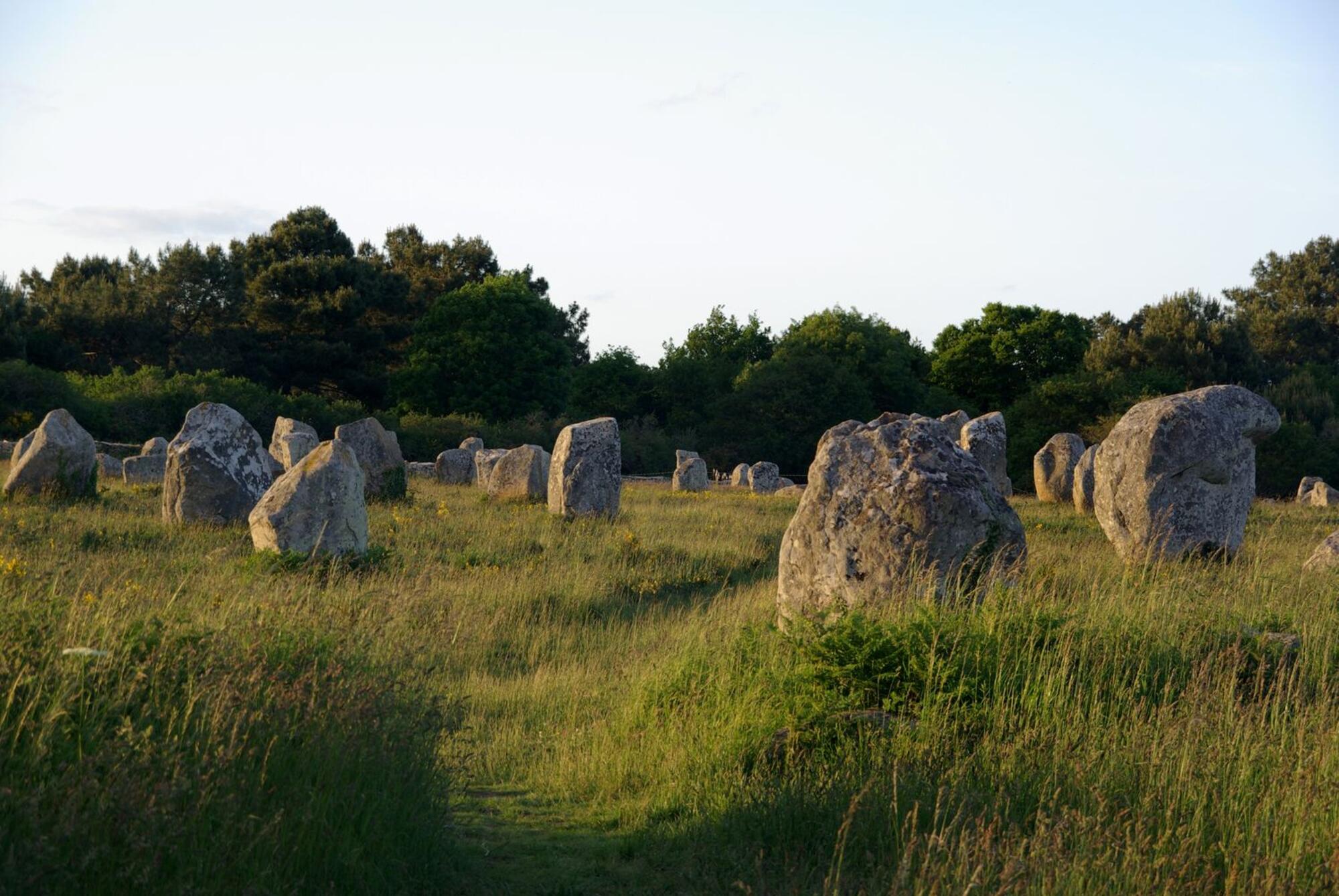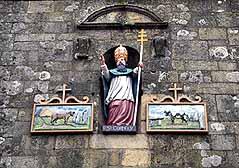- Home
- Megalithism in Morbihan
- Carnac
- "Astonishing Heaps of Stones"
Amazingly, it was not until the 1720's that anyone became aware of "unusual" features in the Carnac landscape. The first mention of the site was probably a passing comment made by A.F. Boureau-Deslandes in 1721. Back in 1475, the duke's tax assessors had visited the village of Maenec, but had reported nothing special (they no doubt had little interest in standing stones at the time). More surprisingly, the scholar Dubuisson-Aubenay was taken to Locmariaquer in 1636 to see the Roman remains but no one took him to Carnac, even though it was on his way to Lorient.
Saint Cornely, protector and imprecator
In the absence of ancient written records, we can only resort to the legend of Cornely, the local patron saint, who is said to have been chased by a Roman legion and to have turned his pursuers into stone when he reached the shore.
In such a legend, it is very difficult to distinguish what might be traces of ancient myths from misinterpretations of Pope Cornelius' biography. Pope Cornely as cattle protector on the façade of the Carnac church.
Pope Cornely as cattle protector on the façade of the Carnac church.
From "Antiquarianism" to "Celtomania"
The records became more frequent from the 1750's onwards and many different suggestions were made as to the origin of the stones (with the Romans figuring prominently in many of the explanations).
Among the most significant contributions were the following:
- The comte de Caylus (1764) was the first person to suspect the great antiquity of the megaliths: "I would be loath to attribute these monuments to the ancient Gauls... The very fact that our ancient lore itself makes no mention of these stones ... implies such a remote antiquity that its very memory was [already] lost in Romantimes".
- F. de Pommereul (1790) considered the megaliths as "religious monuments that we owe to the rough practices of our forebears the Celts" in an early expression of "celtomania" in the field of archaeology. From La Tour d'Auvergne (1792) and more particularly from Cambry (1805) onwards, the "celtic" interpretation was to prevail in archaeological thinking for almost three quarters of a century.
For lack of precise chronological data, the first "antiquarians" generally mixed up Egyptology, classical Antiquity and megalithism.
Field research
While some were speculating on the origins of the megaliths, others came to the area and recorded what they saw (which did not always prevent them from fantasising).
Among these observers, a few stand out, notably thanks to their publications.
- Le chevalier de Fréminville author of Antiquités du Morbihan (1829),
- Prosper Mérimée who served as general inspector of historical monuments, wrote his Notes de voyage (1835),
- Gustave Flaubert and Maxime du Camp observed dryly "ce sont de grosses pierres" ("these are big stones", 1847),
- Jorand, who left his lithographic prints (1823, published by Bottin in 1831),
- Murray Vicars who drew the first "layout" of the monuments of the area in 1832, and many more…
Meanwhile, the first archeological society, the Société polymathique du Morbihan was created in 1826 under the leadership of Canon Mahé. The society organised a series of major excavations in the 1850's and 1860's (the Saint-Michel and the Moustoir tumuli at Carnac, and the Kercado dolmen).
During the latter third of the 19th century, two Englishmen appeared on the scene and left their mark on archeological research at Carnac. They were:
- William Lukis, assisted by Henry Dryden, who mapped out many of the monuments which had never been restored at the time and also excavated a number of monuments, such as the Mané-Kerioned dolmens.
- James Miln, who excavated the Bosseno Roman villa, as well as the head of the Kermario alignments -an area largely modified by later settlements- together with a certain number of dolmens and funeral mounds.
The collections of J. Miln were donated to the town of Carnac after his death in 1881 and provided the starting point for what is now the Carnac museum.
Zacharie Le Rouzic was entrusted with the management of the museum. He was a young man from Carnac who was trained on the job by Miln. He was a leading figure in the field of megalithic studies for over fifty years, until his death in 1939.
As many of the menhirs had been knocked down or were used as supports for fences, restoration works were launched following State acquisitions in the 1880s. The first curator was Félix Gaillard, who worked methodically and cautiously. In 1884, he was followed by Daniel Beaupré, who used somewhat less caution. The task was then given to Le Rouzic (who deserves credit for having "marked" the stones that had been raised with a red cement dot).
A ride amongst megaliths
Portrait of James Miln in front of the Carnac alignments
Portrait of Zacharie Le Rouzic in his museum





